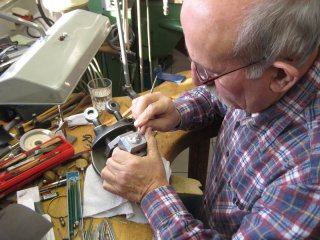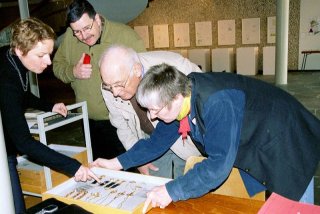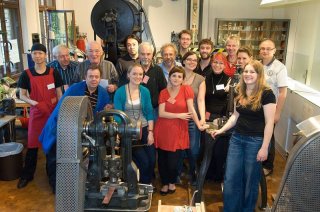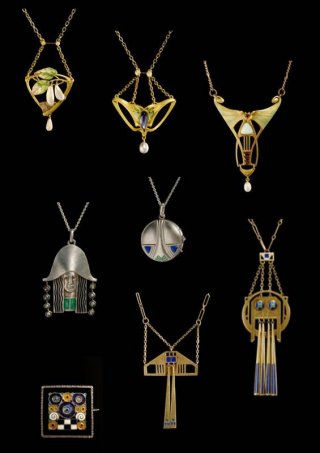Register of Good Safeguarding Practices
Manufactory Production and Design of Jewellery
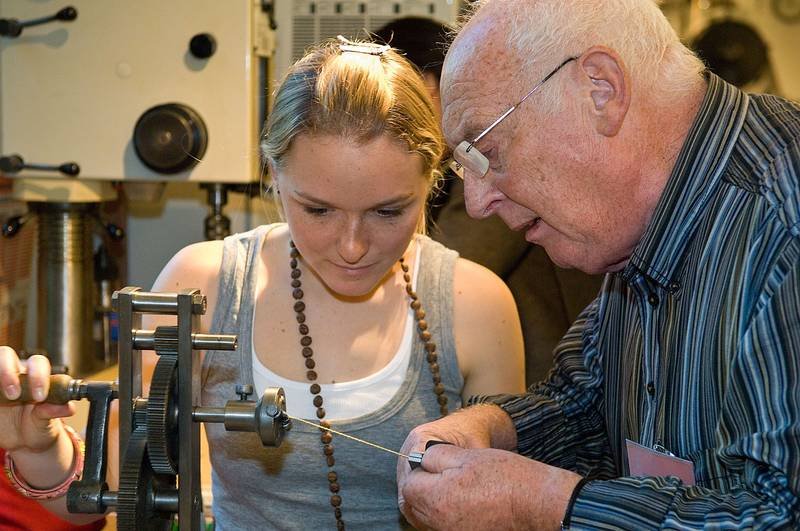
Manufactory production techniques such as guilloching, stamping/pressing or sand casting are characteristic for the production of art nouveau jewellery. These dominated the European jewellery industry from the middle of the 19th century to the middle of the 20th century. A production site of considerable importance, with a high degree of specialisation and professional diversification was in the city of Pforzheim, which to this day remains a special cluster for gold work and jewellery design. For competitive reasons, the special production techniques and, above all, the operation of the machines were conveyed orally, with the obligation to maintain strict secrecy.
Facts & Figures
Crucial date: all seasons
Inscription: 2015
Where to find: nationwide (main area: Pforzheim - Baden-Württemberg)
Contact
Stiftung Deutsches Technikmuseum Berlin
Prof. Dr. Dirk Böndel
www.sdtb.de
No textbooks or instructions for operation of the machines exist. With the demise of the manufactures not only did the usage of the machines stop, but – above all – the expert knowledge required for their operation, adjustments and repairs were threatened.
The project "Manufactory production and design of jewellery" tackles these threats to the viability of the cultural knowledge and skills with the goal of preserving and passing on the unique production techniques and the related knowledge gained in many years of experience. Therefore, the German Museum of Technology in Berlin acquired the machine inventory from Pforzheim and is working together with several partners. The museum not only exhibits the machines informing about their historical context and the resulting products, but also offers tours and film material (in German and English) to a young audience: A fully functional museum workshop was established and the knowledge carriers still living were brought together in a working group called "jewellery unites".
Their specialised machine experience was comprehensively documented in texts, photos and audio-visual presentations. These experienced experts from the jewellery industry pass their artisanal, technical and artistic skills and knowledge onto the next generation as lecturers in seminars in Berlin and in the newly built manufactory transfer centre Pforzheim (Manufaktur-Transfer-Zentrum Pforzheim, MTZ). Furthermore, the manufactory production techniques are presented in workshops and an artist-in-residence programme financed by a grant from one of the participating traditional Pforzheim companies has been set up. Technically qualified knowledge multipliers are thus empowered to pass on machine knowledge and techniques.
Personally and vibrantly conveying knowledge contributes significantly to the preservation and transmission of the production techniques on several levels.
At the heart of the project is the particular focus on the passing on of knowledge and skills. The sustainability and impact of the project are reflected, for example, in the number of fellowship holders of the artist-in-residence programme, who function as knowledge multipliers. Worth particular mention is also the film documentation: the knowledge of the manufactory production techniques gained since the year 2000 is documented in nearly 200 hours of film material and is available on DVD for those interested. This project corresponds in a special way to the principles and goals of the Convention for the Safeguarding of the Intangible Cultural Heritage. It can serve as a supra-regional or international model for preservation measures. All measures are oriented to the sustained preservation and transmission of manufactory techniques, build upon and are systematically structured in relation to each other, and are fully committed to set off from the museum's conveyance over the theory of design to the economically viable revival of the techniques. New markets will be developed for new designs and the use of non-metallic alternative materials, such as plastic, paper or textiles, with the prospect of reviving the production techniques in an economically viable manner by way of increasing demand.


